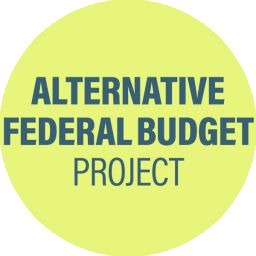Introduction
Post-secondary education contributes to economic, social, cultural, and political development. When delivered equitably, access to education contributes to social mobility, increased social cohesion and economic competitiveness.1 Yet Canada is steadily eroding its public system as university and college budgets become more reliant on private sources of funding—namely, increasingly high tuition fees, especially from international students. Public funding now makes up less than half of university revenues. Students, post-secondary education workers, and communities are feeling the impact of the considerable strain.
Workers in post-secondary institutions have engaged in an unprecedented number of job actions over the past years, as those workers feel the negative effects of corporatization of public post- secondary institutions. They commonly cite issues such as precarity, high workloads, slow progress towards equity, diversity and inclusion, and concerns about governance.
While education falls to the jurisdiction of provinces and territories, the federal government has an important role to play in ensuring that post-secondary education in Canada remains high-quality, accessible and public. Similar to federal leadership on early childhood education, the Government must use the policy and funding levers at its disposal to secure public post-secondary education into the future. Building a more sustainable financial foundation for Canada’s universities and colleges will require three main initiatives, seriously tackling the affordability issue, investing in research, and working with the provinces on a long-term stable funding plan.
Overview
Since 2017-18, universities have been collecting the majority of their revenues through private sources of funding, primarily in the form of tuition fees paid by students and their families.2 Canada’s public education system is surviving on the exploitation of international students and a highly precarious workforce.
The last federal infusion to the Canada Social Transfer—which supports provincial investments in childcare, social services, and post- secondary education—was in 2008-09, and fell far short of making up for previous federal cuts.3,4 Since this infusion, which was notionally for post-secondary education, provincial funding for operating grants has been stagnant—provinces actually decreased funding by 1.8 per cent between 2009-10 and 2020-21 (in constant dollars). Between 2001-02 and 2020-21, the proportion of operating revenue provided by governments decreased from 61.7 per cent to 47.3 per cent. Tuition revenue increased by 75 per cent over the same period.5
Affordability
Universities have increased tuition costs significantly faster than the pace of cost increases for other goods—including housing, transportation, and shelter. Households are spending a much higher proportion of their income on post-secondary education, with lower income households bearing these increases to a greater extent.
Between 2000 and 2020 and adjusted for inflation, universities increased the average undergraduate tuition by 115 per cent and the average graduate tuition by 89 per cent. The institutions also continued to widen the fee gap between international and Canadian students. In 2022-23, the average university increased international undergraduate student tuition by eight per cent in just one year—making those students pay 429 per cent more than domestic undergraduate students.7
Student debt continues to grow, totalling just below $39 billion.8 This impacts individuals and families with the burden of repayment amid an affordability crisis and prevents others from accessing post-secondary education altogether.
Increasing numbers of students face food insecurity, filling local food banks from coast to coast9,10 and living in crowded housing amid high prices and low supply.11
In recognition of the financial strain on students, the federal government permanently eliminated interest on federal student loans in the 2023 budget. The elimination of interest on loans was an important win with the goal of helping students pay down their debt more quickly. The government did temporarily expand loan limits and increase grants from $3,000 to $4,200, a drop from $6,000 during the pandemic. The federal government must do more to assist students, contain costs and improve access to education.
Investment in skilled trades
The Canadian Apprenticeship Forum reports that companies will need to hire an average of 75,000 new apprentices per year in the next five years to meet demand for skilled trades.12 COVID-19 impacted Canada’s apprenticeship systems, which need investments to increase access to vocational education, training and apprenticeship opportunities— especially in Red Seal Trades.
Research
The monumental scientific and research advances needed to confront local, national, and global challenges are not possible without publicly funded research. Yet, the five years of increases to basic research committed in Budget 2018 were not renewed, although they were less than 60 per cent of what was recommended at the time by the government’s own blue-ribbon panel.
The government appointed a new advisory panel in 2023 to make further recommendations on the federal research support system. The Report of the Advisory Panel on the Federal Research Support System, released a week before budget 2023, highlights the need for significant investment in publicly funded research and in fostering the talent pipeline by reducing the affordability burden on graduate students, postdoctoral fellows, and early career researchers.
Without an injection of money into the science, research and innovation ecosystem and support for Canada’s current and future researchers, the panel warns that Canada will not be able to compete globally, exacerbating brain drain and retention and hindering Canada’s research and innovation potential.13
Core public funding
Unlike shared priorities supported by federal transfers such as health care, childcare, housing, or public transit, there is no federal legislation, framework, plan, or strategy for post-secondary education in Canada.
The AFB has long advocated for the establishment of pan-Canadian principles for post-secondary education, as currently exist in health care. The AFB would implement the Canada Post-secondary Education Act to enforce strong standards for post-secondary education across Canada. Its principles should include public administration, comprehensiveness, and accessibility. The principles agreed upon for the multilateral framework agreement on early childhood education are inspiring for post- secondary education as well: high-quality, accessible, affordable, flexible, and inclusive.
Data collection and sharing should also be agreed upon as currently there is a paucity of national data to measure progress on affordability, access or even the size of the post-secondary education workforce. For example, there is no national data set on college tuition, the full academic workforce, provincial student loan data, or student demographic data beyond gender.
Ottawa and the provinces must make a new commitment and partnership to ensure that Canada’s public post-secondary systems are quality, affordable, and accessible.
Actions
Universities and colleges play a vitally important role in Canadian society. They are tasked with no less than preserving, sharing, and advancing knowledge. This crucial mission can only be achieved with the following actions:
The AFB will provide transparent, predictable, and adequate federal cash funding to the provinces and territories in support of public post- secondary education, through a National Post-Secondary Education Transfer, discrete from the Canada Social Transfer, with agreed conditions established through federal legislation or multilateral or bilateral agreements.
Under the AFB, this transfer will start at $8 billion per year. It will also match the escalator in the health transfer of nominal GDP growth with a floor of three per cent per year. Agreements will be signed to ensure that the federal funding is in addition to provincial spending for the sector, and is used to lower tuition for all students, invest in workforce renewal (including providing fair wages and reducing precarity among academic staff) and improve access to underserved communities.
The transfer is an important step in working towards undoing the system’s dependence on international student fees, reducing the fee gap between international and domestic students, and eventually making a nation-wide transition to a universal and tuition-free post-secondary system.
The AFB will commit $30 million annually to better regulate international student recruitment. It will also stipulate that the government act to implement improved immigration pathways to permanent residency for international students, thus helping them access government services including equitable access to health care.
The AFB will increase and make permanent the pandemic student grant level of $6,000 and make permanent the larger loan limit. It will also reweight the program. Currently, every $1 in grants that the federal government disburses, students take on $2 in loans that must be repaid. A more equitable disbursement in the short run would be for the government to move toward a 50:50 ratio for the grants and loans model.
Echoing the recommendations of the Report of the Advisory Panel on the Federal Research Support System, the AFB will increase funding for the research agencies core grant programming by at least ten percent annually for five years, or $400 million per year. This will bolster Canada’s research ecosystem and provide better paid opportunities for graduate students, postdoctoral students and early career researchers.
The AFB will increase the number and value of graduate student scholarships and postdoctoral fellowships by $185 million in 2024-25 and an additional $55 million per year thereafter, as well as index scholarships and fellowships to inflation going forward. This will help address over 20 years of stagnant support.
The AFB will invest $25 million per year towards concrete commitments to improve equity, diversity and inclusion, renewing Equity, Diversity and Inclusion Institutional Capacity Building grants, the Dimensions program, and repeating the Survey of Post-Secondary Faculty and Researchers.
The AFB will allocate an additional $500 million a year, adjusted annually to inflation, to expand access to apprenticeships and other forms of skills training. This allocation will build upon existing programs and improve access to these supports.
This includes the expansion of funding channels for apprenticeships and skills training beyond the Employment Insurance (EI) system to expand eligibility to those who do not qualify for EI are unable to access enough funds for training in the trades and additional targeted incentives to increase opportunities for groups including women and gender-diverse people, Indigenous workers, youth, workers with disabilities, newcomers to Canada and racialized people.
The AFB also proposes to implement and make permanent the union- led advisory table announced in Budget 2022, to provide advice to the government on skills development and the changing labour market.
Amplifying calls from national Indigenous organizations, the AFB will commit $2 billion over three years to Indigenous post-secondary education taking a distinctions-based approach. The funding will support First Nations, Inuit, and Métis-led post-secondary education models and curricula and Indigenous students wanting to pursue tertiary education. This includes additional investments in students currently funded through the Post-Secondary Student Support Program (PSSSP), those that are eligible but unfunded by PSSSP, and reflects increased costs due to higher tuition and compulsory fees and inflation.
Finally, to address the data gaps related to post-secondary education, the AFB will commit $50 million over three years to support improved data collection on topics such as student experience, mental health, housing, international student demographics, tuition fees, student debt, outcomes, and recruitment, as well as information on the post-secondary education workforce.
This AFB commitment includes funding for the expansion of the University and College Academic Staff System (UCASS) Survey to capture equity data beyond gender, data on contract academic staff, and data from the college sector to help fill information gaps that currently limit our understanding of equity, diversity, and inclusion in the academic workforce.







